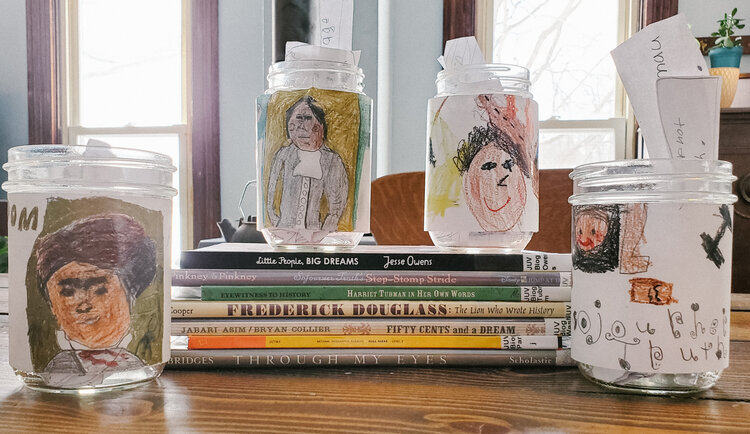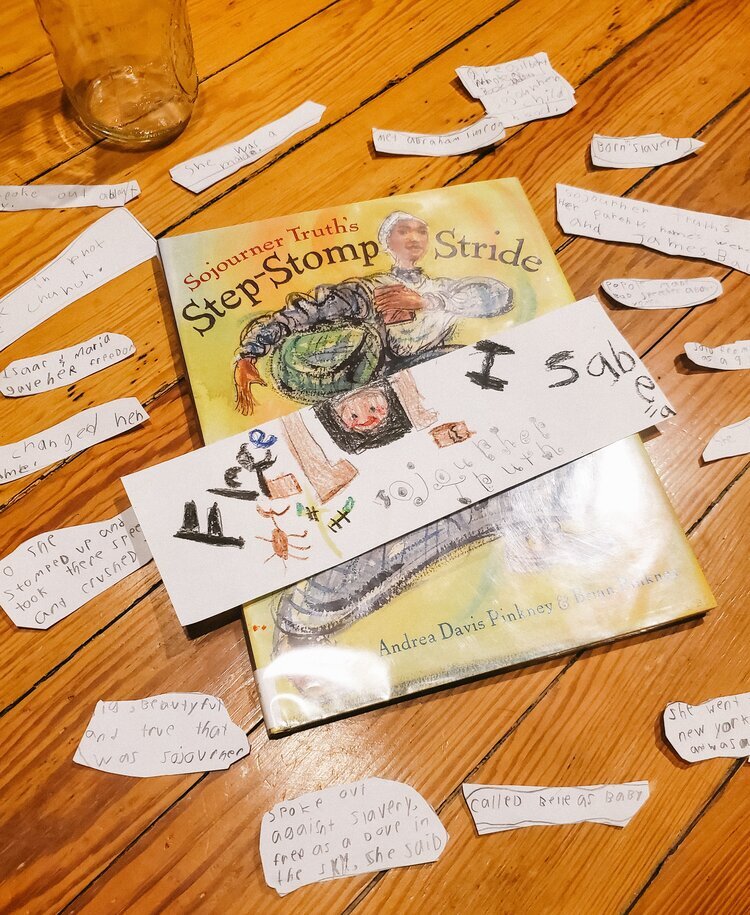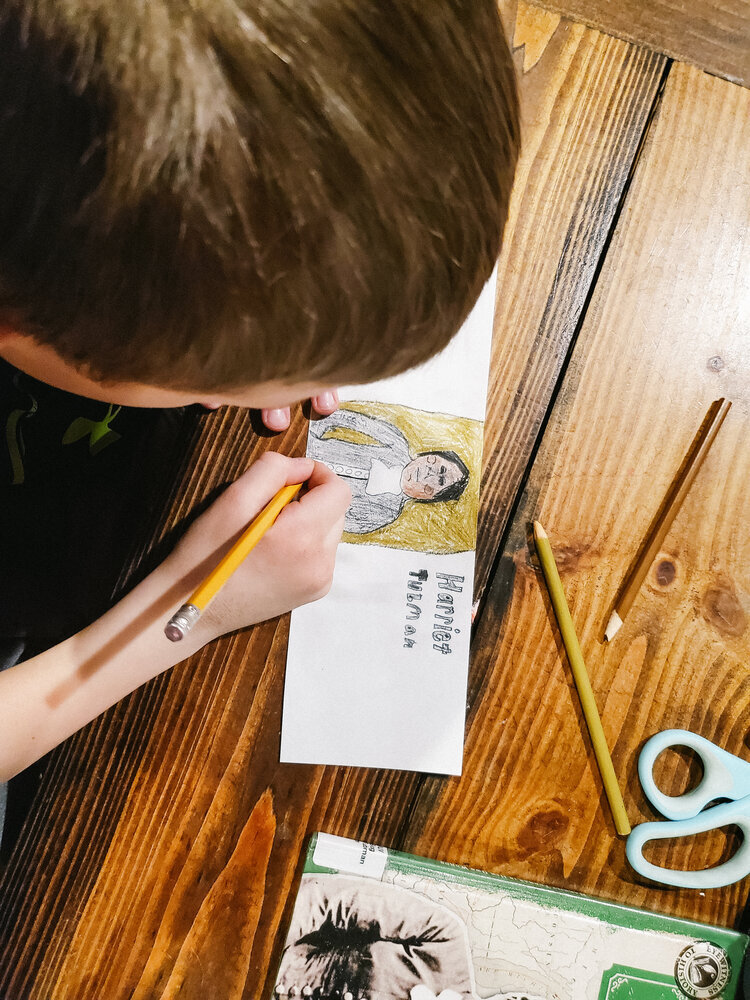Biography Jars
Biography Jars
Biography Jars could be a replacement for the typical book report or history paper. They draw in multiple intelligences and increase student engagement.
Biography Jars are a great way to interact with biographies. I have used them when introducing the genre in a classroom as well as with my own children to study prominent historical figures. They have been a big hit in both settings. The photos seen throughout this post are from our home study. We used this activity to learn more about prominent black figures that have made an impact on the fight for equality throughout history. Biography Jars also provide an introduction to identifying important text evidence. The goal of the activity is to represent the person of focus through text and visuals.
TO CREATE:
First, you will need to locate biographies on your person/people of focus. Local libraries are a fantastic resource for biographies. If you are planning in advance, talk with the children’s librarian and explain your lesson. They may have suggestions for you or could help create a biography book set.
Depending on the age and level of your children, you can read the biographies together or introduce the activity and allow them to work independently. We tied this into our routine nightly reading so we read together. I began by explaining what a biography jar is and the idea behind it. I gave them ownership by explaining that while reading they could identify and use the details that they felt were most important. I read the biographies aloud while my kids both had a clipboard, paper and pencil. They took notes on the details they found important. When beginning, they kept asking, “Is this important?” We talked about the specific details in context to the person’s life and I let them make this decision for themselves. There were a lot of discussions about the people, time periods and the injustices they faced. After reading, they wanted to take turns reading their details aloud. It was interesting to hear the commonalities and differences in the details selected. Depending on the outcome you are hoping for, you could use the initial note taking as a rough draft to be edited or allow these to be the details that will be used in the jars.
Next, comes the creation of the jars. We used mason jars since we happened to have an abundance of these. Any cup, jar or can could be used though. To begin, we browsed through the illustrations and photographs from some of the biographies and reread the details the kids pulled out to represent our prominent figures. We brainstormed ways we could decorate the jar to represent the people. A picture of the person and their name were the first things they came up with. We also talked about symbols or scenes that could be used. They decided to each create the artwork for one person then combine their details to represent them. I had precut strips of white paper that would fit around the jars. They were able to choose from colored pencils, crayons or markers for their medium. While they worked on their visual representations we listened to online read alouds of other related books.
Once the jar covers were completed we taped them around the jars. Then they each cut their details out and placed them in the jar. When asked about a person, they were able to share the stories behind the artwork then read the detail strips aloud.
Biography Jars could be a replacement for the typical book report or history paper. They draw in multiple intelligences and increase student engagement. I could see the jars easily adapting to settings such as the the Arctic or events such as the Revolutionary War. A similar jar could be used to represent almost any unit of study.
How do you see yourself adapting Biography Jars for classroom or home use? We would love to see how you use them! Share in the comments or tag us on social media, @playbeyondthelines on Instagram.





